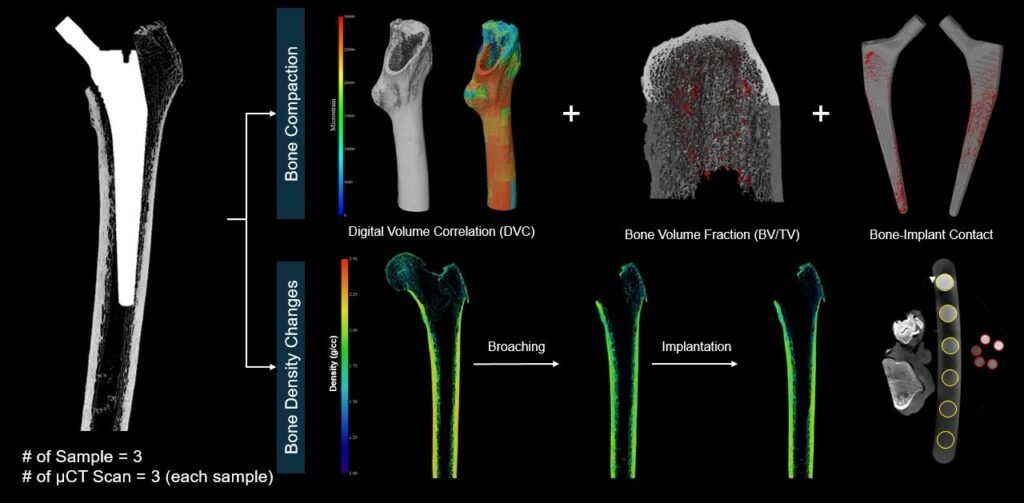Researchers at the University of Warwick have developed advanced imaging techniques that reveal what happens inside bones during hip replacement surgery, offering new insights that could improve implant stability and long-term outcomes. The study focuses on uncemented total hip arthroplasty, a procedure where the implant relies on natural bone growth for fixation rather than bone cement.
Uncemented implants are increasingly used, especially in younger patients, because they avoid the long-term degradation associated with cemented versions. However, their success depends heavily on how well the implant fits and interacts with the surrounding bone. Until now, surgeons have had limited tools to visualize these interactions in detail.
Using cadaver specimens, high-resolution micro-CT scans, and digital volume correlation, the Warwick team studied how bone responds to a key surgical step called broaching. Broaching involves shaping the femoral canal with metal tools to prepare it for the implant. The researchers found that this process compacts bone fragments around the implant site, increasing bone density by up to 21 percent. These compacted fragments act like a natural graft, potentially strengthening the interface between bone and implant.
Despite low direct contact between the implant and bone, only 3 to 5 percent, the implant achieved an 82 percent geometric fit. This suggests that achieving the right shape and preserving compacted bone debris may be more important than maximizing surface contact. The study also showed that broaching creates a three-point contact pattern, which helps stabilize the implant even in porous bone.
Dr. Vineet Seemala, who led the research, emphasized that these findings could help surgeons refine their techniques to improve outcomes. Rather than focusing solely on maximizing contact area, surgeons might prioritize preserving bone structure and achieving optimal fit. This could reduce complications such as implant loosening or bone fractures.
Dr. Arnab Palit, senior author and Assistant Professor at Warwick Manufacturing Group, added that the data could inform more accurate computational models for personalized surgical planning. These models would allow surgeons to predict how different bone types respond to specific implants and techniques, potentially reducing the risk of failure.
Article from the University of Warwick: New imaging techniques show what happens inside your bones during hip replacement surgery
Abstract in Computers in Biology and Medicine: Quantifying bone compaction and implant-bone contact in uncemented total hip arthroplasty through μCT and digital volume correlation: A cadaveric study

